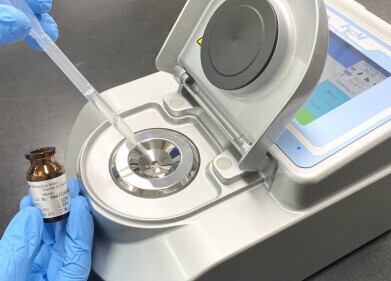Laboratory Products
How is Automation Changing Laboratory Work?
Jun 21 2021
From reducing operational costs to increasing sample turnaround times, laboratories are continually searching for new ways to improve efficiency. Automation offers a multitude of productivity benefits and has become omnipresent in laboratories around the world.
So, what exactly is automation? It describes the use of automated instruments, equipment and control systems to minimise human intervention. Want to know more about how automation is changing laboratory work? Read on as we spotlight three of the biggest improvements automation has championed over the past decade.
Improve accuracy, precision and trueness
Even the smallest inconsistencies can compromise the accuracy, precision and trueness of results. Automated equipment and instruments have allowed researchers to eliminate the discrepancies caused by human error and help ensure more accurate and reliable results. As well as sample handling and preparation, automation is used to analyse results. Companies like Thermo Fisher are pioneers of lab automation software and have developed powerful data management solutions that allow researchers to unlock error-free results.
Increase sample turnaround times
Automation can drastically reduce the turnaround times offered by laboratories. This is especially useful for time-sensitive fields such as virology. For example, automated equipment like the Roche cobas® 6800 system uses polymerase chain reaction (PCR) technology to carry out high throughput testing of COVID-19 nasal swab samples. The advanced instrument performs a variety of tasks, including viral nucleic acid extraction, purification, amplification and detection. The ability to automate testing allows scientists to detect active COVID-19 cases as soon as possible and prevent further community outbreaks. As well as healthcare-specific companies such as Roche, multinational professional services firms like Ernst & Young have been enlisted to develop bot technology for COVID-19 analysis.
Minimise the risk of repetitive strain injury
While laboratory work isn’t usually associated with physical stress, the repetitiveness of certain tasks can result in high repetitive strain injury (RSI). Pipetting, the process of aspirating, transporting and dispensing liquids, is one of the worst RSI offenders. The use of automated pipetting systems and liquid handling robots not only improves accuracy and precision, but also helps to prevent workplace injuries.
The capacity to minimise the risk of out-of-specification (OOS) errors is one of the biggest benefits of automation. Automated solution such as the XPR Automatic Balance from Mettler Toledo have revolutionised sample preparation through direct gravimetric dosing. Find out more about the game-changing technology in ‘How gravimetric sample preparation is helping pharmaceutical manufacturers meet the demands of consumers, regulators, and the market.’
Digital Edition
Lab Asia 31.2 April 2024
April 2024
In This Edition Chromatography Articles - Approaches to troubleshooting an SPE method for the analysis of oligonucleotides (pt i) - High-precision liquid flow processes demand full fluidic c...
View all digital editions
Events
Apr 28 2024 Montreal, Quebec, Canada
May 05 2024 Seville, Spain
InformEx Zone at CPhl North America
May 07 2024 Pennsylvania, PA, USA
May 14 2024 Oklahoma City, OK, USA
May 15 2024 Birmingham, UK


















